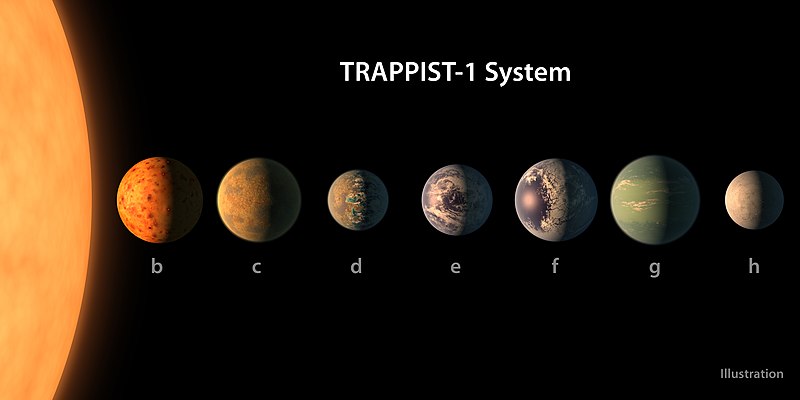Файл:PIA21422 - TRAPPIST-1 Planet Lineup, Figure 1.jpg
Перейти до навігації
Перейти до пошуку

Розмір при попередньому перегляді: 800 × 400 пікселів. Інші роздільності: 320 × 160 пікселів | 640 × 320 пікселів | 1024 × 512 пікселів | 1280 × 640 пікселів | 2560 × 1280 пікселів | 6000 × 3000 пікселів.
Повна роздільність (6000 × 3000 пікселів, розмір файлу: 2,63 МБ, MIME-тип: image/jpeg)
Історія файлу
Клацніть на дату/час, щоб переглянути, як тоді виглядав файл.
| Дата/час | Мініатюра | Розмір об'єкта | Користувач | Коментар | |
|---|---|---|---|---|---|
| поточний | 18:39, 22 лютого 2017 |  | 6000 × 3000 (2,63 МБ) | PhilipTerryGraham | User created page with UploadWizard |
Використання файлу
Така сторінка використовує цей файл:
Глобальне використання файлу
Цей файл використовують такі інші вікі:
- Використання в af.wikipedia.org
- Використання в ar.wikipedia.org
- Використання в bn.wikipedia.org
- Використання в ca.wikipedia.org
- Використання в el.wikipedia.org
- Використання в en.wikipedia.org
- Використання в es.wikipedia.org
- Використання в et.wikipedia.org
- Використання в fi.wikipedia.org
- Використання в fi.wikibooks.org
- Використання в glk.wikipedia.org
- Використання в id.wikipedia.org
- Використання в ja.wikipedia.org
- Використання в ku.wikipedia.org
- Використання в lt.wikipedia.org
- Використання в ms.wikipedia.org
- Використання в my.wikipedia.org
- Використання в nl.wikipedia.org
- Використання в pnb.wikipedia.org
- Використання в pt.wikipedia.org
- Використання в ro.wikipedia.org
- Використання в tl.wikipedia.org
- Використання в tr.wikipedia.org
- Використання в ur.wikipedia.org
- Використання в vi.wikipedia.org



